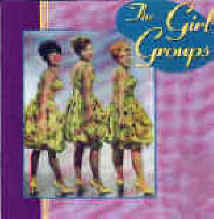

In the late 1950s, a number of female vocal groups began to produce songs that mixed doo wop harmonies with rhythm and blues music. The groups were usually trios or quartets in which one vocalist sang a lead part while the others contributed a background vocal. This arrangement became known as the "girl group" sound, and it flourished during the early 1960s. Girl groups were a constant presence on the Billboard pop charts in 1962 to 1965, but, by 1965 the popularity of this sound was waning as it was eclipsed by other musical trends. Although girl groups were only successful for a short time, their sound influenced many of their musical contemporaries, and it continues to have an impact on performers today
The girl group era represents an important part of the early days of rock and roll as well as the history of women in popular music. The emergence of the girl groups marked a turning point for women in rock and roll, for it established a specific style of performing that listeners associated with women.
The girl group sound was the result of a collaborative effort that involved producers, songwriters, instrumentalists, and manager, in addition to the women who sang the songs. Each of these persons, particularly, the producer, were significant in determining a particular group's success or failure.
Some rock historians would argue because of their lack of autonomy, the girl groups were largely interchangeable and would not have succeeded without the guidance of others.. This assessment overlooks the facts that the performers who made up the girl groups were generally very young, most were in their teens and early twenties, which put them at a great disadvantage in terms of artistic control. Female artists were rarely taken seriously by those who ran the music industry in the fifties and sixties, and the girl groups were undoubtedly viewed simply as vehicles for hit songs rather than creative, talented individuals.
Many of the groups' careers consisted of establishing a formula that enabled them to hit the Top Forty and repeating that formula until it ceased to be successful. For this reason, few groups were able to capture the attention of the listening public for more than two or three years. Most of the teen magazines and television variety shows that helped publicized male performers virtually ignored the girl groups, limiting the amount of exposure that they could achieve.. Most of the best known girl groups were black, and the racism and the sexism that were prevalent within the music industry virtually ensured that these groups would; have limited life spans. Because media coverage of the groups was minimal, the artists had to rely solely upon the songs to maintain their popularity. If a producer insisted that a girl group record songs resembling the tune that had been their initial success, the public would predictably son grow tired of the group. And once the public's interest waned, the producer would abandon the group and move on to another project; this abandonment usually signaled the end of the group's career.
Since most groups lacked an image that could be connected with their music, audiences often received little or no information about the individuals who made up the particular group. Girl group artists were generally identified by their group name alone, and the membership of any given group often changed from one record to the next. Producers occasionally used unnamed session or backup vocalists to sing under the name of a successful group, and some groups recorded under more than one name. When the girl group era more or less came to an end in the mid 60s, must of the artists who were still actively pursuing musical careers faded into obscurity. although a number of groups continued to perform in following decades, often singing in oldies revival shows, their whereabouts are largely unknown. while the story of the performers, producers, songwriters, and others who came to manufacture the girl group sound, it is also a snapshot of a specific time period in which individuals who have been for the most part have been forgotten helped change the direction of popular music.